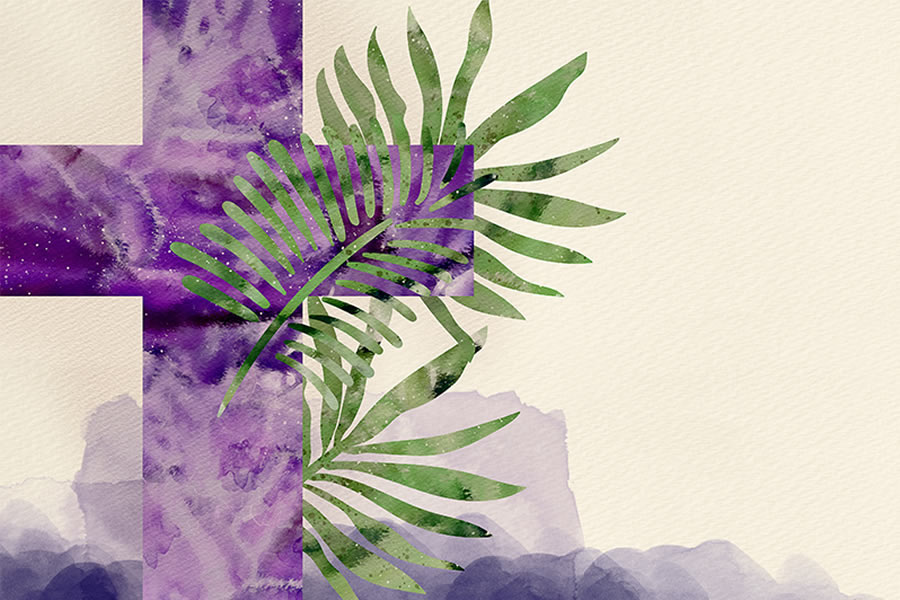
Ashes and Lent
by Rev. Gabriel Baltes, O.S.B. | 03/16/2025 | A Message from Our PastorDear Parishioners,
Nearly two weeks ago on Ash Wednesday, when we began this season of Lent, we participated in a ritual that, despite its antiquity and archaic quality, has retained enormous appeal throughout the centuries of Christendom. Our foreheads were marked with ash, the remnants of last year’s branches from Palm Sunday. These symbols, which were once expressions of exaltation and triumph, were now expressions of human mortality as we were told, "Remember you are dust and to dust you shall return." And so, we entered a sober forty-day period of self-examination and renunciation intended to foster conversion—a change in the way we view the world and a change in the way we live within it.
On Ash Wednesday, before the ministers marked our foreheads, the celebrant prayed the following text for the “Blessing of Ashes:”
O God, who desires not the death of sinners, but their conversion, mercifully hear our prayers and, in your kindness, be pleased to bless + these ashes, that we, who acknowledge we are but ashes and shall return to dust, may, through a steadfast observance of Lent, gain pardon for sins and newness of life after the likeness of your Risen Son, who lives and reigns for ever and ever. Amen.
The phrase “Blessing of Ashes” is, in one respect, a reference to the liturgical prayer that was used to sanctify the ashes so central to this rite. But the spiritual author, Father James A. Wallace, CSsR, suggests that we might interpret these ashes on another level as well. He calls our attention to some of the varied ways that ashes improve our lives: enriching compost for gardens, melting ice on wintery roads, deterring troublesome pests, polishing silverware to restore its original luster, and absorbing unpleasant odors. This variety of usage reflects the multivalence of the symbol itself—hence its enduring power. Unpacking the symbolic meanings of the ashes that were used to begin Lent may help guide us through this season and highlight those areas in our lives that call for conversion and renewal.
Another tool I am recommending for one’s Lenten reading is the book Finding Sanctuary: Monastic Steps for Everyday Life. Its author, Father Christopher Jamison, OSB, is the Benedictine abbot of Worth Abbey in Sussex, England. The book is an inspirational and practical guide that was the product of a TV series in England, The Monastery, that featured Worth Abbey.
Although it reflects monastic values, it was written for people of all walks of life, demonstrating the universal character of those fundamental insights from the Rule of St. Benedict. It highlights the importance of monastic practices such as silence, contemplation, obedience, humility, community, spirituality, and hope.
But perhaps the book’s most gripping section is its first chapter, Everyday Life. It begins by asking the tantalizing question, "How did I get this busy?" Many of us may have asked this same question, wondering how we ever got caught up in a rat race of activity that we do not enjoy but can’t seem to liberate ourselves from. Abbot Christopher traces what he believes is the origin of this busyness and then offers a possible remedy to heal us from it. Although first published in 2006, I have found the book just as valuable for people today.
Whatever we might read or do for Lent, let us ask God to direct us through this journey so that at Easter we may joyfully unite ourselves to Jesus Christ who embraced death and then discovered a new way of life called “Resurrection.”
Blessings,
Rev. Gabriel Baltes, O.S.B.